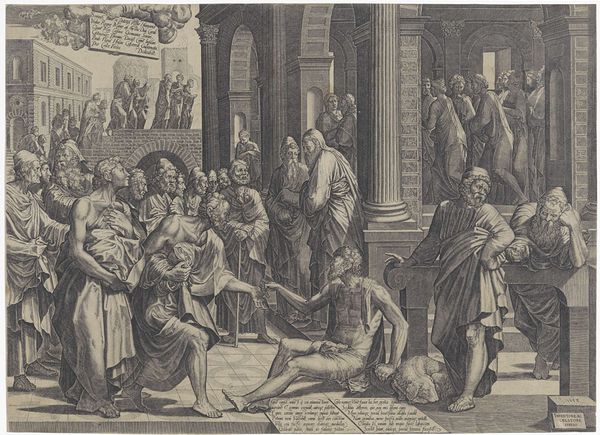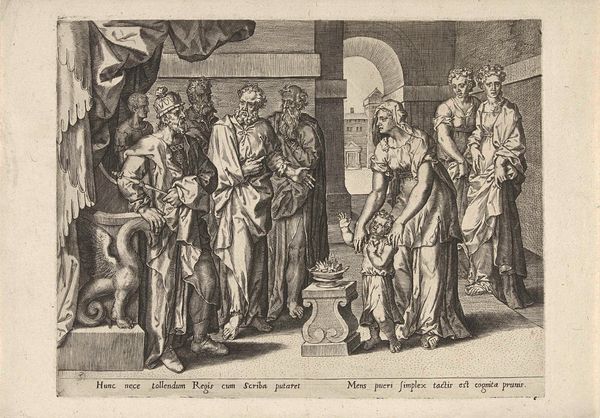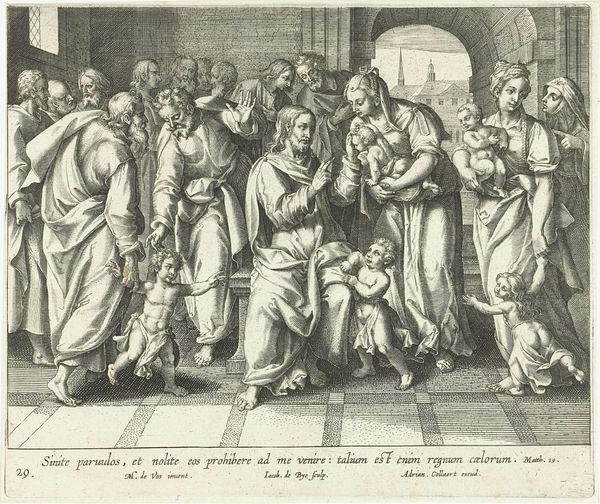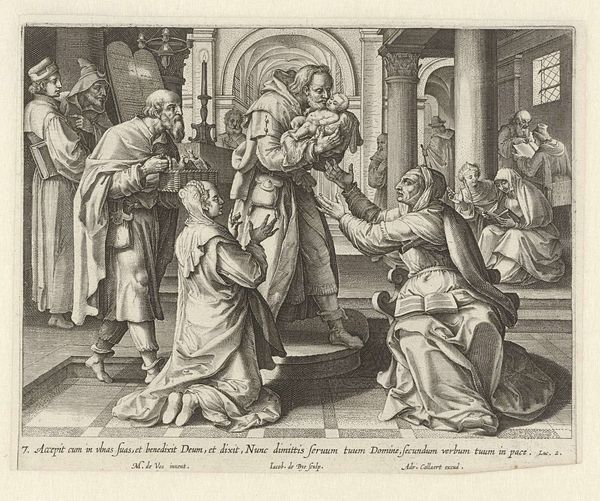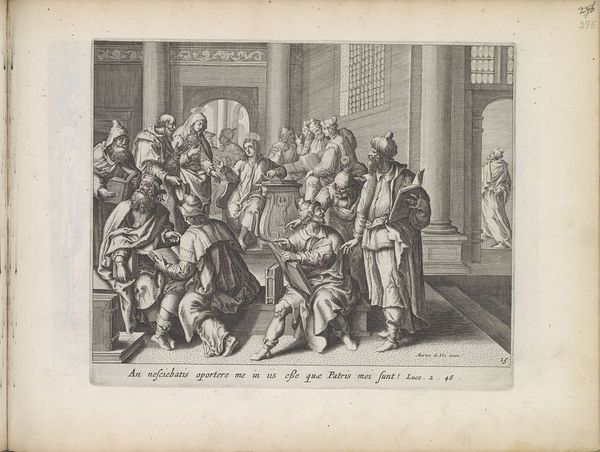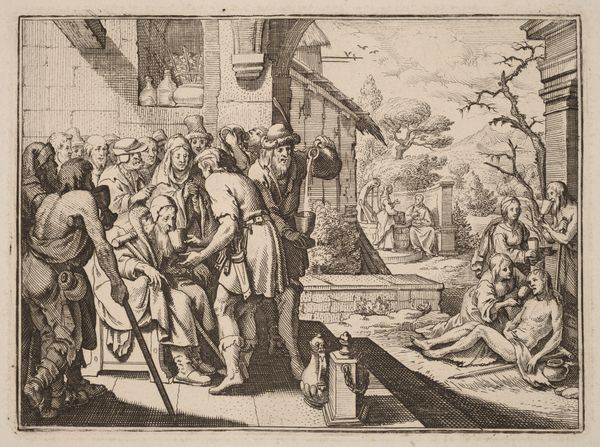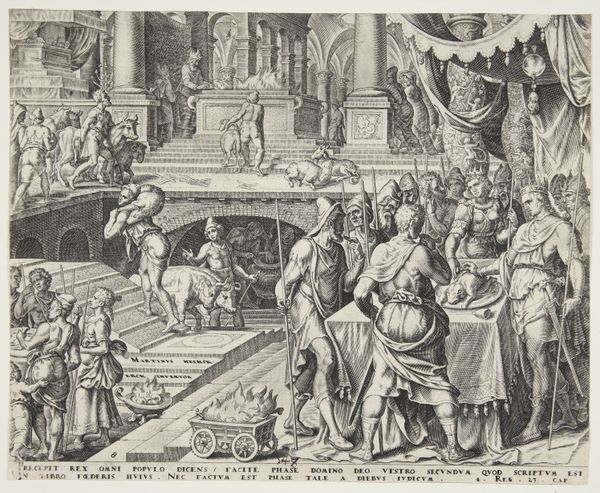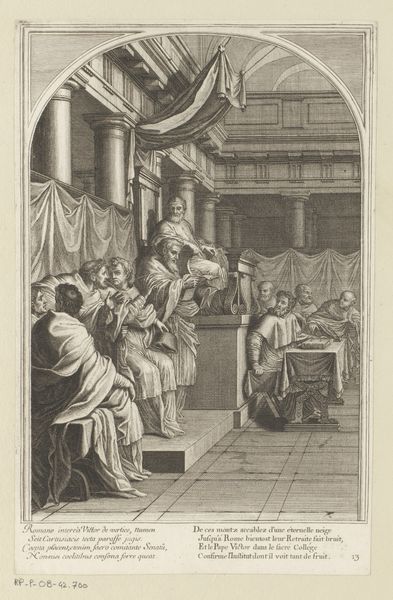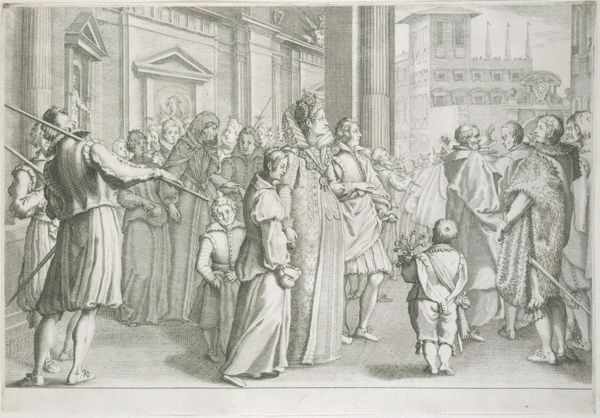
print, engraving
#
narrative-art
# print
#
old engraving style
#
mannerism
#
figuration
#
history-painting
#
engraving
Dimensions: height 204 mm, width 262 mm
Copyright: Rijks Museum: Open Domain
Pieter Jalhea Furnius created this engraving, "Moses and the Crown of the Pharaoh," around the late 16th century. The composition is dominated by a series of figures arranged across a shallow stage, the Pharaoh seated under a canopy to the right, and a group of onlookers to the left, all rendered with meticulous detail in their garments and expressions. This creates a complex interplay of gazes and gestures. The spatial organization relies on a careful arrangement of architectural elements, which frame the scene and guide the viewer's eye. The texture of the engraving, achieved through fine lines and cross-hatching, adds depth and visual interest to the scene. This level of detail serves to emphasize the theological and political dimensions of the narrative. The image is not merely illustrative but symbolic. It destabilizes fixed meanings by juxtaposing the innocence of youth with the gravity of power. This symbolic confrontation invites reflection on the themes of destiny, divine will, and the transient nature of earthly authority. As such, the engraving becomes a site for ongoing interpretation.
Comments
No comments
Be the first to comment and join the conversation on the ultimate creative platform.
